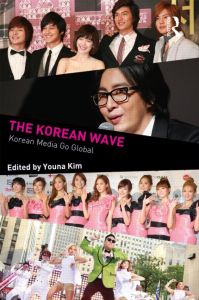by Raizel Liebler

All of the essays are short — all are under twenty pages — allowing for a quick overview of various issues regarding the cultural and political impact of Korean culture. Of course, each essay has references, allowing for more detailed reading for anyone who is interested. And the introduction is likely the best short referenced response to “so why does this even matter? and why should I care?” about the present and potentially future impact of Korean cultural exporting. This book takes an overall viewpoint to look at the “power” of the Korean wave — both with soft power and a more economic viewpoint. This contrasts with other books that tend to focus on only a few cultural products.
I want to especially highlight essays in this collection that I haven’t seen anything in the other Korean wave collections, like Liew Kai Khiun’s K-pop Dance Trackers and Cover Dancers: Global Cosmopolitanization and Local Spatialization and Kent A. Ono and Jungmin Kwon’s Re-Worlding Culture?: YouTube as a K-pop Interlocutor. These essays delve into how Korean pop is a visual, memetic musical form, one that Western music has stepped away from mostly — and how new sharing technologies like YouTube allow for greater sharing and intensity participatory fandom.
There is are also two essays about the understanding of exported Korean culture by those of Korean heritage outside of Korea — Korean-Americans and East Asians in Europe. These perspectives have not been written about in other Korean wave collections.
Summary: Even if you have read other Korean wave (hallyu) academic essay collections, this book still has more to say. This book gives an interesting take on the influence of Korean culture outside Korea, to both diasporic audiences and to people without a personal connection to Korean culture.

